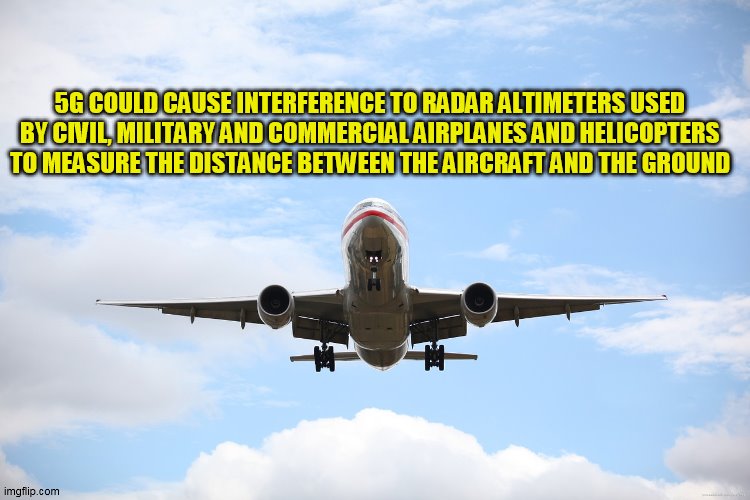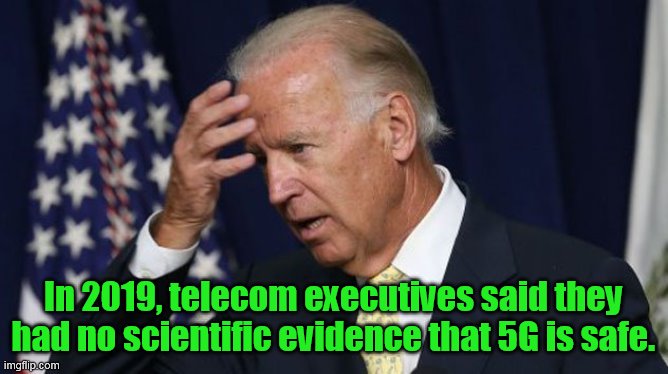 By B.N. Frank
By B.N. Frank
Problems with 5G transmissions causing serious aviation interference issues have still NOT been resolved (see 1, 2). Even though the Biden Administration refuses to extend the July 1 deadline for airlines to address this, telecom companies have agreed to play nice.
From Aviation Pros:
IATA Welcomes Telcos’ Agreement to Extend 5G Mitigations but More is Needed
The International Air Transport Association welcomed the agreement by AT&T Services, T-Mobile, UScellular, and Verizon to extend until January 1, 2028 the voluntary mitigation measures for 5G C-band transmissions at 188 US airports.
Related To: International Air Transport Association (IATA)
Geneva – The International Air Transport Association (IATA) welcomed the agreement by AT&T Services, T-Mobile, UScellular, and Verizon to extend until January 1, 2028 the voluntary mitigation measures for 5G C-band transmissions at 188 US airports. These mitigation measures, which were put in place in January 2022, concurrent with the rollout of 5G C-band operations at or near US airports, include lowering the power of 5G transmissions and had been set to expire July 1, 2023. However, while the agreement is a welcome stop-gap development, it is by no means a solution. The underlying safety and economic issues around 5G C-band deployments by telecommunications services providers (telcos) have only been kicked down the road.
“Airlines did not create this situation. They are victims of poor government planning and coordination. Industry concerns about 5G, expressed for many years in the appropriate forums, were ignored and over-ridden. Half-measure solutions have been foisted upon airlines to implement at their own expense and with little visibility into their long-term viability. This extension is an opportunity for all stakeholders, including telcos, government regulators, airlines and equipment manufacturers, to work together for a fair and equitable solution,” said Nick Careen, IATA’s senior vice president operations, safety and security.
Background to the Current Situation
The activation of 5G C-band operations in January 2022 threatened enormous disruption to the US air transport system because of the potential risk of interference with aircraft radio altimeters (radalts) that also use C-band spectrum and are critical to aircraft landing and safety systems. This was only addressed at the eleventh hour when AT&T and Verizon agreed to a voluntary power limit for 5G C-band transmissions near airports. Even with this agreement, however, the continuing risk of interference with aircraft radalts was seen as so significant by the Federal Aviation Administration (FAA) that airlines were only permitted to operate at affected airports in low visibility (Category 2 and Category 3) conditions through one of two methods:
- Alternative Means of Compliance (AMOC) under which avionics and aircraft original equipment manufacturers (OEMs) establish that specific aircraft / radalt combinations provide sufficient resilience against interference to continue to utilize low visibility landing procedures at the affected airports.
- Modifying existing radalts or replacing them with newer models at their own expense, to enable unrestricted operations at agreed 5G power levels.
In May 2022, the FAA informed airlines that, as of July 1, 2023 the AMOC process would end. In its place, a blanket requirement defining a minimum performance level for radalts for low visibility landing procedures was to be established. Radalts not meeting the minimum performance level would have to be replaced or upgraded at airline expense. The cost of fleet wide radalt upgrading is estimated at more than $638 million.
Several airlines began the radalt upgrade process shortly after the May 2022 communication from the FAA, even though the FAA did not issue a formal notice of proposed rulemaking until January 2023. Even then, supply chain issues make it unlikely that all aircraft can be upgraded by the 1 July deadline, threatening operational disruptions during the peak northern summer travel season.
Recent Developments
The latest agreement by the telcos to defer until January 2028 full power-up of 5G C-band transmissions near airports buys time but does not address underlying issues.
The retrofits required by July 1, 2023 are a temporary fix as they are not sufficiently resilient in the face of full power 5G C-band transmissions. New 5G tolerant radalt standards are being developed but are not expected to be approved before the second half of 2024. Following that, radalt makers will begin the lengthy process to design, certify and build the new devices for installation in thousands of existing aircraft, as well as for all new aircraft delivered between now and 2028. Four-and-a-half years is a very tight timeframe for the scale of this undertaking.
“Many airlines have indicated that despite their best efforts they will not meet the 1 July deadline owing to supply chain issues. But even for those that do, these investments will bring no gains in operating efficiency. Furthermore, this is only a temporary holding action. Under current scenarios, airlines will have to retrofit most of their aircraft twice in just five years. And with the standards for the second retrofit yet to be developed we could easily be facing the same supply chain issues in 2028 that we are struggling with today. This is patently unfair and wasteful. We need a more rational approach that does not place the entire burden for addressing this unfortunate situation on aviation,” said Careen.
Of course, in the U.S., 5G interference issues are not isolated to aviation equipment. In 2020, utility companies and associations filed lawsuits against the Federal Communications Commission (FCC) for not protecting utility infrastructure from potential electrical interference issues with 5G (see 1, 2). In June 2022, telecom provider, SpaceX claimed Dish’s 5G satellites would cause interference issues affecting Starlink satellite service. In July 2022, DirecTV and RS Submit warned about satellite interference issues and The Department of Defense (DoD) reported it also had been trying to resolve potential 5G network interference issues with military radar. In August 2022, a bipartisan group of senators requested that the FCC reconsider harmful interference risks with associated Ligado’s network before allowing it to be activated. Fortunately in September, Ligado cancelled trial network plans, perhaps because of a report that also warned about interference. In October 202, another report revealed that the telecom industry was aware of “known RF challenges” with 5G as well.
The 5G bummers don’t stop there. Other issues associated with 5G include poor service (see 1, 2, 3, 4, 5, 6, 7, 8, 9) and cybersecurity risks (see 1, 2). Additionally, a growing number of Americans don’t want 5G towers and antennas installed in or near their communities due to other risks associated with them (see 1, 2, 3, 4, 5, 6, 7, 8, 9, 10, 11, 12, 13, 14, 15, 16).
Opposition to 5G is worldwide and this has limited, slowed, and/or stopped deployment in some locations. Since 2017, doctors and scientists have been asking for 5G moratoriums on Earth and in space due to biological and environmental health risks (see 1, 2, 3, 4) and the majority of scientists oppose deployment. Since 2018 there have been accounts reported worldwide of people and animals experiencing symptoms and illnesses after it was activated (see 1, 2, 3, 4, 5, 6, 7, 8). In 2019, telecom executives gave U.S. congressional testimony that they had NO independent scientific evidence that it’s safe. In 2021, a federal court ruled in favor of petitioners who sued the FCC for NOT updating wireless radiation guidelines (including 5G) since 1996. Some researchers have also warned that 5G activation may be contributing to COVID-19 infections as well as hundreds of thousands if not millions of bird deaths.
Additionally, high-speed broadband can be achieved more safely and securely with hard-wired internet connections (see 1, 2) and Americans have already paid for safer and more secure broadband options (see 1, 2). Regardless, the insidious “Race to 5G” continues thanks to the Biden Administration, the FCC, and other unrelenting proponents.
Activist Post reports regularly about 5G and other unsafe technologies. For more information, visit our archives and the following websites:
- Environmental Health Trust
- Americans for Responsible Technology
- Children’s Health Defense
- Electromagnetic Radiation Safety
- Physicians for Safe Technology
Become a Patron!
Or support us at SubscribeStar
Donate cryptocurrency HERE
Subscribe to Activist Post for truth, peace, and freedom news. Follow us on SoMee, Telegram, HIVE, Flote, Minds, MeWe, Twitter, Gab, What Really Happened and GETTR.
Provide, Protect and Profit from what’s coming! Get a free issue of Counter Markets today.


Be the first to comment on "Biden Admin Won’t Extend Deadline to Fix 5G Aviation Issues; Telecoms Agree to Extend “Voluntary Mitigation Measures”"